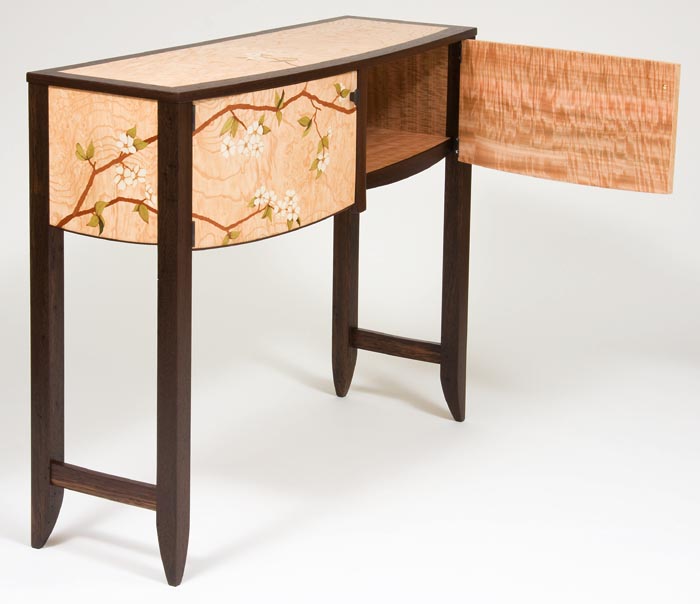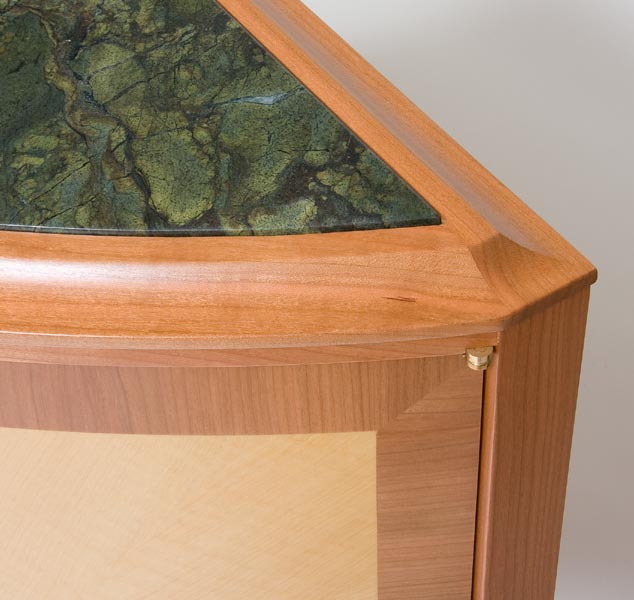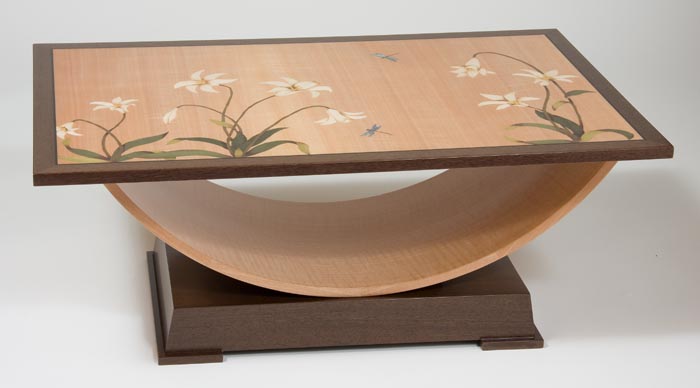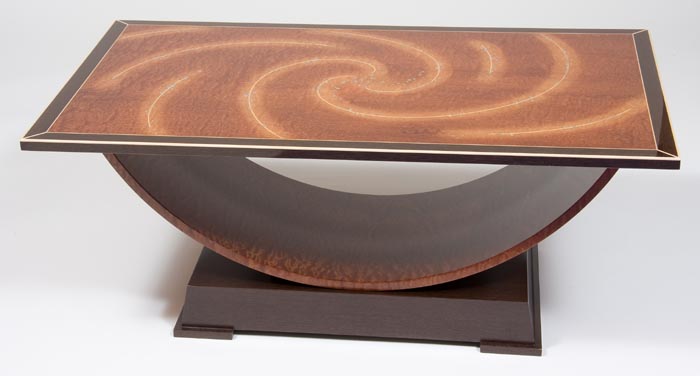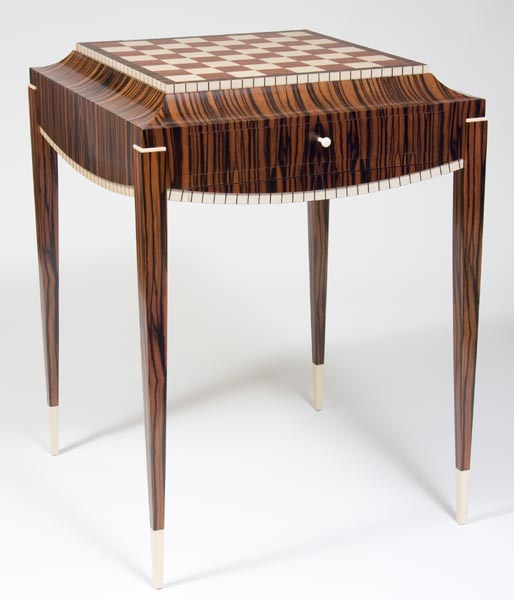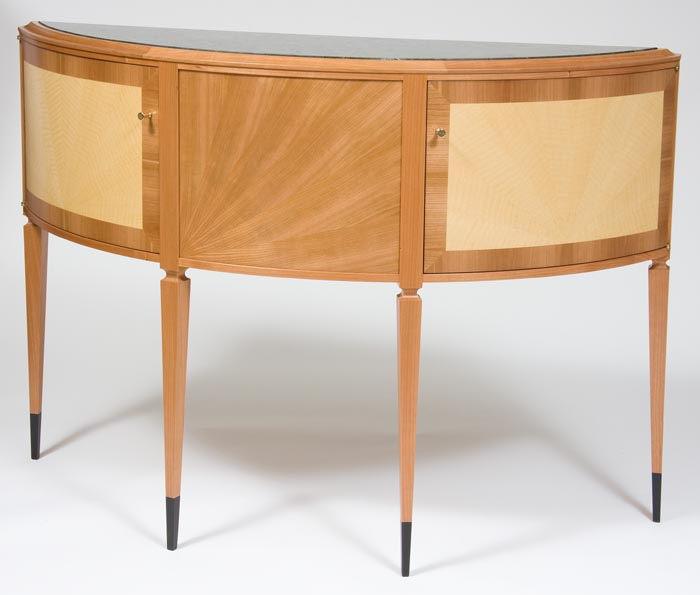
Either he crept up on woodworking, or woodworking crept up on Craig Thibodeau. One way or another, woodworking took over what started out as a career as a designer of tools and lighting, but the vestiges of his past work are still firmly entrenched in his current endeavors.
“I still do all of my design work on the computer,” Craig admitted. “Furniture still gets designed just like everything else I did while working for others. But working with my hands is something I have always done, and over time, as my hand skills have increased, I’ve had more desire to devote more time to hands-on work. The bottom line is that I really like working with my hands and building things.
“I always had access to a shop growing up in California. My dad was always working on some project that I was either forced to or was fortunate enough to work on. In college, I built pieces of furniture for myself, and occasional pieces for others. I graduated from San Diego State with a degree in mechanical engineering and went to work doing consumer product design. Primarily, I was designing tools and lighting. After a number of years, I started doing more woodworking on the side and started selling more pieces. Eventually, I ended up doing more woodworking than designing. By 2000, I was doing woodworking full-time.
“When you start doing professional work, you must work faster and do better quality work and designs. These days, I do much higher quality work that is far more complex. I focus on studio type or custom furniture: individual one-off pieces where each piece is different. Naturally, I want my work to get noticeably better every year.
“Most of my work is sold through the yearly International Design and Wood Show in San Diego. It’s a three-week show in the middle of the summer, and that show generates a large portion of my year’s work, in addition to repeat clients. It’s a big show, now in its 27th year. I’ve won awards almost every time I entered, and last year I won best of show, which in turn generated two huge jobs. About a year ago, I added in a couple of other shows here in California. Having ribbons arrayed in front of your furniture helps draw people over, generating both interest and commissions. Obviously, I put only my best work in the show.
“Marquetry, which I started adding to my pieces in 2005, has me drawing by hand for the first time. I still design the piece itself on computer, but do the floral designs and natural imagery by hand. A cabinet is a cabinet, but then when you add marquetry, it adds depth: more is happening, and it makes it more interesting to look at. You can look at flowers, for example, and see how they flow around the piece and whether that looks natural or not. Marquetry, to me, is the next step in making my furniture more interesting and detailed.”
One of the most striking things that Craig does, repeatedly, so to speak, is to make two identical pieces, often adorned with marquetry, that are mirror images of one another with dark colors replacing light-colored woods and vice versa. His Dogwood Buffets are a good example, sporting gradually bowed doors with curved bottoms and identical but color reversed marquetry.
At other times, he makes two identical pieces but adorns the surfaces very differently, like his Granite and Blue Ulysses sideboards. “The Blue Ulysses sideboard,” Craig explained, “has two Ulysses butterflies inlaid in stone. It was a commissioned piece, and the butterflies were requested by the customer. At the same time, I did the Granite sideboard, built on the same lines and frame, but with a completely different surface look. The granite top also makes it more functional, as it is heat-resistant. Even though they are exactly the same size, the surface treatments, including such things as the border treatment on the doors, the subtle difference in the upper leg, and the use of marquetry either to tie together, as in the Blue Ulysses, or separate, as in the Granite, makes them look proportionally different.
“The Lily and Spiral Tables are another pair, built on the same frame but with very different surface ornamentation. The spiral is a representation of the Milky Way, using bleach for the light lines, mother-of -pearl dots and inlaid holly lines. A high polish gives it a very three dimensional effect. As you walk around the table, the orientation of the pearl changes its tint and shimmer.”
With some of his other works, Craig has been adding texture as well. “The Sahmel piece has a more Asian feel,” he pointed out, “including traditional woven bamboo panels in the doors. Its actual function is as a filing cabinet with sections inside for various client files, and [it] was made for an accountant who uses cubbyholes for each client. They are hidden cubbyholes in a very beautiful box revealed all at once by sliding doors.
“From a technical standpoint, my Chess Table is my most complicated piece to date. For example, the black and white trim at the curved bottom edge is done with individual pieces of holly and ebony cut so that the ebony lines flare out to follow the curve of the bottom. Hence, each piece of holly is a slightly different shape to the one next to it. It was a challenge to do. The pores were done in polyester with a conversion varnish top to give it a glass-smooth gloss finish.”
Along with his need to create and work with his hands, Craig clearly hears the call to help others. In his case, ARTS is his chosen charity. “ARTS, an acronym for A Reason To Survive, teaches art to children who are facing challenges. I donate to their auctions, and hope to begin teaching there as well.”
Learning from Thibodeau sounds like one very lucky break for a group that starts out so down on their luck. For the rest of us, we’ll take our pleasure perusing the striking and outstanding pieces that often come, like Noah’s charges, in interesting pairs.
